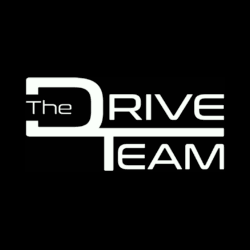

Paul Morris has branded a probable move to introduce assisted shift to Supercars and therefore make the heel-and-toe obsolete as “dumb”.
Assisted shift is among the plans for Gen3 which came to light in a recent electronics tender document, and follows last year’s revelation that drive-by-wire throttle is set to become the standard when the ruleset takes effect in 2022.
While selecting a higher gear in a present day Supercar is generally a clutchless process, with the assistance of the shift-cut, the downshift still requires the driver to blip the throttle.
VIDEO: Russell Ingall explains heel-and-toe downshifting
Morris’s time as a Supercars driver straddled the changeover in 2008 from H-patterns to sequential shift, and he prefers the former.
“I think they should go back to H-patterns, if it was up to me,” the 2014 Bathurst 1000 winner told Speedcafe.com when the topic of assisted shift was raised.
“All it [assisted shift] is about is trying to keep some expense out of the transmission, so the team owners and the people that pay the bills go, ‘If you put paddle shift in them, it’s a lot easier on the gearbox.’
“It’s going to save them some money, that’s all they’re thinking.”
Asked then to clarify if he supported assisted shift and therefore rendering the heel-and-toe obsolete, Morris declared, “No, I reckon it’s dumb.”
Morris has raced a variety of vehicles, including sprint cars and Stadium Super Trucks, and is nowadays well-known as a driver coach at his Norwell Motorplex facility.
While he believes that the cream would still rise to the top if an automated throttle blip is introduced to Supercars, he is in no doubt that it would require less driving skill.
“I’ve driven both; I’ve driven the MARC Car with a stick shift, I’ve driven the MARC Car with paddle shift, I’ve driven it with auto blip, non-auto blip…” noted ‘The Dude’.
“It makes it very easy to drive when all you’ve got to do is work two pedals and a steering wheel; it’s taken a third element out of it.
“Personally, I think it’s taken one of the skillsets away from the driver, but I’m sure the good guys will still go quicker than the average guys; it happens in F1.
“It’s interesting; I do get some people who come here [Norwell] for driver coaching and can’t drive a manual car; that’s not unusual.
“Even some older guys that have been driving paddle shift race cars for the last five or six years in GT or Porsche, they come for driver coaching and you’ve got to stick them in the paddle shift car because they’ve forgotten how to drive a manual properly.”

‘Relevance’ was cited as one of the positives of Gen3 when the cornerstone elements of the project were announced at last year’s Bathurst 1000, and a move towards a semi-automated transmission could arguably be considered such.
By way of example, while the roadgoing 2020 Mustang is sold by Ford Australia with a six-speed manual as standard in all but the Convertible variants, the V8 Fastback and R-Spec also feature rev matching.
It is a point acknowledged by Morris, but he is of the view that what is an increasingly rare driving challenge in a Supercar should remain.
“What are they saying, it’s got road car relevance? I don’t know, maybe people just won’t drive manuals any more, but what we have as a V8 Supercar, that should be a raw, brutal machine that’s hard to drive,” he said.
“It’s a point of difference and when you go overseas, they always talk about heel-toe and how our cars are still like that, and it’s what makes them hard to drive.
“I reckon, who cares what the road car does? Just make it a cool car for someone to watch drive.”
Assisted shift is described in the aforementioned tender as one of the “Specific features of the intended engine”.
The document further notes, in a section on ECU functionality, “Currently assisted shift systems are under review. At this stage, an E-shift system is likely.”
Another major talking point from the tender was the possibility of push to pass, which is set to be trialled during Gen3 development this year but is not a fait accompli in competition.
Morris was similarly unequivocal in his thoughts on that concept.
“The only push to pass should be the bumper,” he quipped.
“Some guy’s holding you up, wobbling around; move him out of the way.
“You don’t need to have push to pass, you just need to let people race.”
Morris is hardly alone, with 71.27 percent of the almost 8500 respondents to last week’s Pirtek Poll voting against push to pass.






















Discussion about this post